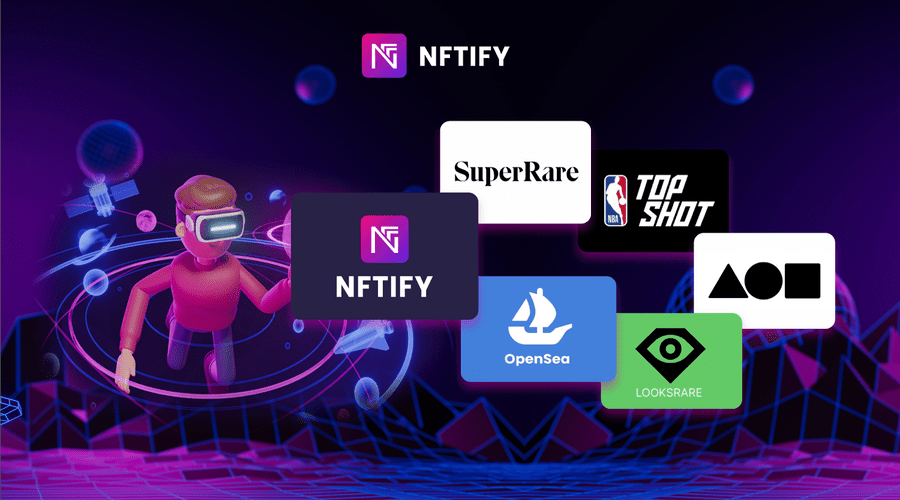The rise of NFTs has been one of the biggest trends in the world of technology and finance in recent years. NFTs are unique digital assets that cannot be exchanged for another asset. They are bought and sold using blockchain technology, which enables the creation of a tamper-proof digital ledger. While the use of NFTs in the art world has been well-documented, their potential goes far beyond this. In this article, we will explore the revolutionary impact of NFTs on time.
Time and NFTs
Chronology is the science of arranging events in their order of occurrence. Time is one of the most important elements of chronology. When we think of time, we usually think of clocks and calendars. However, time can also be represented in digital form, and this is where NFTs come in.
NFTs can be used to create time-stamped digital assets. Each NFT contains a unique digital signature that identifies the asset and the time it was created. This means that NFTs can be used to create a tamper-proof record of the history of an asset. This has important implications for record-keeping and historical preservation. With NFTs, we can create a permanent record of the ownership and history of an asset.
Smart Contracts and NFTs
Smart contracts are self-executing contracts that are programmed to execute when certain conditions are met automatically. They are an important component of blockchain technology. Smart contracts can be used to automate transactions between NFTs and ensure they are properly time-stamped.
For example, let’s say you want to buy an NFT representing a digital art piece. You can set up a smart contract that will automatically execute when you send the payment. The smart contract will verify that the payment has been received and then transfer the NFT to your digital wallet. The time stamp on the NFT will record the exact time of the transaction.
The benefits of this for businesses and consumers are significant. For businesses, smart contracts can automate many of the processes involved in buying and selling NFTs, reducing the need for intermediaries and increasing efficiency. For consumers, smart contracts can provide greater transparency and security, ensuring that their transactions are safe and secure.
NFTs and Provenance
Provenance is the history of ownership of a particular asset. It is an important concept in industries such as art and luxury goods, where the authenticity of an asset can have a significant impact on its value.
NFTs can be used to track the ownership and history of physical assets. For example, let’s say you buy an NFT that represents a piece of artwork. The NFT will contain a time stamp that records the exact time of the transaction. The NFT can also be used to track the ownership of the artwork over time. This creates a tamper-proof record of the artwork’s history, which can be used to combat fraud and improve transparency.
Case Studies of NFTs in Time

There are already many companies and organizations using NFTs to revolutionize chronology. Here are just a few examples:
Monegraph
Monegraph is a platform for creating and selling digital assets. The platform uses blockchain technology to create a tamper-proof record of ownership and history for each asset. Various companies have used Monegraph to create NFTs for a wide range of digital assets, including art, music, and video.
Verisart
Verisart is a platform for certifying the authenticity of physical art and collectibles. The platform uses blockchain technology to create a tamper-proof record of ownership and history for each asset. Various businesses have used Verisart to certify the authenticity of a wide range of physical assets, including art and luxury goods.
National Basketball Association
The National Basketball Association (NBA) has created NFTs for some of its most memorable moments. Companies sell these NFTs as unique digital assets, which include highlights of games. The NFTs contain time stamps that record the exact time of the game and the moment the highlight occurred. This creates a tamper-proof record of the NBA’s history, which the NBA can use to create new revenue streams and engage fans in new ways.
Challenges to the Widespread Adoption of NFTs in Time
While the potential of NFTs in chronology is significant, there are still several challenges to their widespread adoption. Some of the most pressing challenges include:
Technical Barriers
The technical complexity of NFTs and the blockchain technology that underlies them can be a barrier to adoption. Businesses and consumers may be hesitant to adopt NFTs because they are unfamiliar with the technology or are not confident in their ability to use it effectively. This highlights the importance of education and awareness campaigns to help people understand the benefits and potential of NFTs.
Regulatory and Legal Challenges of NFTs in Time
NFTs are a new and emerging technology; as such, there are still regulatory and legal challenges to overcome. For example, there may be questions about intellectual property rights, tax implications, and consumer protections. As NFTs become more widely adopted, it is likely that regulatory and legal frameworks will evolve to address these challenges.
Environmental Concerns of NFTs in Time
The process of creating NFTs and recording them on the blockchain can be energy-intensive. This has led to concerns about the environmental impact of NFTs and their potential contribution to climate change. While some companies are exploring ways to make NFTs more sustainable, there is still much work to do to address these concerns.
Opportunities for NFTs in Time
Despite these challenges, there are still significant opportunities for NFTs in chronology. Some of the most promising opportunities include:
Improved Record-Keeping
NFTs have the potential to create a more secure and transparent record of ownership and history for both digital and physical assets. This can help combat fraud, improve transparency, and create new business models.
New Revenue Streams
NFTs can create new revenue streams for businesses and individuals by enabling the creation and sale of unique digital assets. This can be particularly valuable in industries such as music, art, and sports memorabilia.
Improved Efficiency
NFTs can automate many of the processes involved in buying and selling digital and physical assets. This can reduce the need for intermediaries and increase efficiency, creating cost savings for businesses and consumers alike.
Emerging Use Cases for NFTs in Time
As the popularity of NFTs continues to grow, there are emerging use cases that highlight the potential of these digital assets to revolutionize chronology. Some of the most promising use cases include:
Music Industry
The music industry is ripe for disruption by NFTs. With NFTs, musicians can create unique digital assets for each of their songs or albums. Musicians can sell these assets to fans, who can then own a piece of the music and benefit from its success. NFTs can also track the ownership and history of music rights, creating a more transparent and secure record of ownership.
Gaming Industry
NFTs are enabling game developers to create unique in-game items and experiences that players can buy and sell, creating a new revenue stream. Additionally, NFTs can track the ownership and history of these items, creating a more transparent and secure record of ownership.
Real Estate
NFTs allow for the creation of unique digital assets for real estate properties, which can track the ownership and history of the property, creating a more transparent and secure record of ownership. Additionally, NFTs can automate the buying and selling of real estate properties, reducing the need for intermediaries and increasing efficiency.
Sports Memorabilia
Companies are using NFTs to create unique digital assets for sports memorabilia, which fans can buy to own a piece of sports history. Additionally, NFTs can track the ownership and history of sports memorabilia, creating a more transparent and secure record of ownership.
Conclusion
NFTs are a new and exciting technology with vast potential to revolutionize many industries, including chronology. While there are still challenges to overcome, the opportunities for businesses and consumers are significant. NFTs have the potential to create a more secure and transparent record of ownership and history, create new revenue streams, and improve efficiency. As the technology continues to evolve, it is likely that we will see even more innovative use cases for NFTs in the future.
FAQs
- What makes NFTs unique?
NFTs are unique because each one represents a specific asset and cannot be exchanged for another asset. - What is blockchain technology?
Blockchain technology is a decentralized digital ledger that is used to create a tamper-proof record of transactions. - How do NFTs use blockchain technology?
NFTs use blockchain technology to create a tamper-proof record of ownership and history for digital and physical assets. - What are smart contracts?
Developers program smart contracts to automatically execute when certain conditions are met, making them self-executing contracts. - What are some potential challenges of using NFTs for chronology?
Some potential challenges include the need for widespread adoption and the potential for loss of data.




